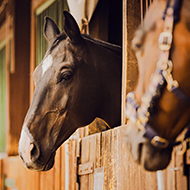Scottish wildcat interbreeding recent phenomenon, studies find
“It is clear that hybridisation is a result of modern threats common to many of our native species” – Jo Howard-McCombe.
Two newly published studies have revealed that European wildcats in Scotland did not begin to significantly interbreed with domestic cats until the mid 20th century.
The researchers, based at universities in the UK and Germany, looked at the genome sequences of 48 modern cats and samples from 258 historic cats found at 85 archaeological sites.
They found that although domestic cats have been living in Britain for more than 2,000 years, until 1956 no individual wildcats in Scotland had more than approximately 5 per cent domestic cat ancestry.
Since then, the proportion of domestic cat ancestry has rapidly increased. In modern individuals, the proportion ranged from 11 per cent to 74 per cent.
However, the research revealed that the captive wildcat population, established in the 1960s, has avoided interbreeding to the same extent, with an average domestic cat ancestry of 18 per cent.
The amount of hybridisation is important for conservationists. Although wildcats are a legally protected species in the UK, the protection does not extend to hybrid cats.
The researchers have suggested that the sudden increase in interbreeding may have been due to the decline in numbers of wildcats meaning they had reduced opportunities to mate with other wildcats.
Jo Howard-McCombe, of the University of Bristol, said: “It is clear that hybridisation is a result of modern threats common to many of our native species.
"Habitat loss and persecution have pushed wildcats to the brink of extinction in Britain.
"It is fascinating that we can use genetic data to look back at their population history, and use what we have learnt to protect Scottish wildcats.”
The two studies have been published in Current Biology.
Image © Shutterstock



 Zoetis has launched a new survey to identify management techniques for Equine Herpes Virus (EHV).
Zoetis has launched a new survey to identify management techniques for Equine Herpes Virus (EHV).